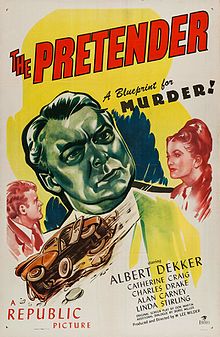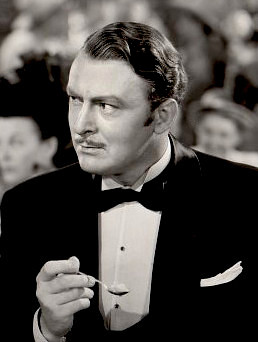
Thomas Albert Ecke Van Dekker was an American actor and politician known for his roles in Dr. Cyclops, The Killers (1946), Kiss Me Deadly, and The Wild Bunch.
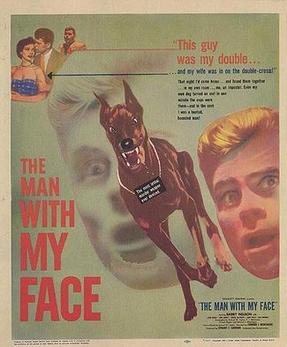
The Man with My Face is a 1951 American film noir directed by Edward Montagne featuring Barry Nelson, Carole Mathews and Lynn Ainley. The film marks Jack Warden's movie debut.

Port of New York is a 1949 American film noir/crime film directed by László Benedek with cinematography by George E. Diskant and shot in semidocumentary style. The film is notable for being Yul Brynner's first film appearance. The film, which is very similar to T-Men (1947), was shot on location in New York City.

Suspense is a 1946 American ice-skating-themed film noir directed by Frank Tuttle and written by Philip Yordan. The film stars Barry Sullivan and former Olympic skater Belita. The supporting cast features Albert Dekker, Bonita Granville, and Eugene Pallette.
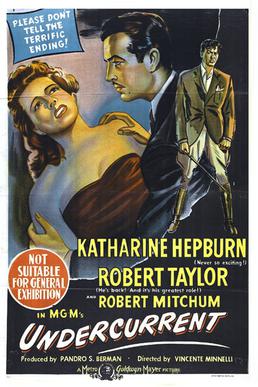
Undercurrent is a 1946 American film noir drama directed by Vincente Minnelli and starring Katharine Hepburn, Robert Taylor, and Robert Mitchum. The screenplay was written by Edward Chodorov, based on the story "You Were There'" by Thelma Strabel, and allegedly contained uncredited contributions from Marguerite Roberts.
Witness to Murder is a 1954 American film noir crime drama directed by Roy Rowland and starring Barbara Stanwyck, George Sanders, and Gary Merrill. While the film received moderately positive reviews, it ended up as an also-ran to Alfred Hitchcock's somewhat similar Rear Window, which opened less than a month later. The latter picture was a box-office hit.
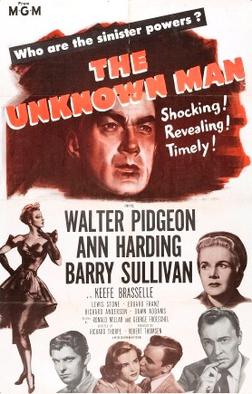
The Unknown Man is a 1951 American courtroom drama film directed by Richard Thorpe and starring Walter Pidgeon, Ann Harding and Barry Sullivan.
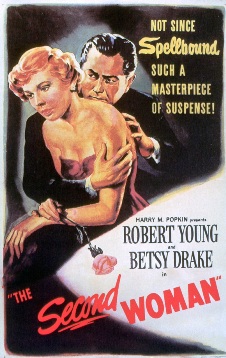
The Second Woman is a 1950 American film noir mystery-suspense film directed by James V. Kern and featuring Robert Young, Betsy Drake, John Sutton and Florence Bates. Sequences of the film were shot on the coastal areas of Monterey, California.

Lured is a 1947 American film noir directed by Douglas Sirk and starring George Sanders, Lucille Ball, Charles Coburn, Sir Cedric Hardwicke, and Boris Karloff. The film is a remake of 1939 French film Pièges directed by Robert Siodmak, which was titled Personal Column in the United States; Personal Column was also the title of this film as originally released. It did not enjoy good business under that name – the code administration was concerned that some people thought the film was titled "LURID", so United Artists pulled it from distribution, and subsequently re-released it with the alternate title.

Hatter's Castle is a 1942 British film noir based on the 1931 novel Hatter's Castle by A. J. Cronin, which dramatizes the ruin that befalls a Scottish hatter set on recapturing his imagined lost nobility. The film was made by Paramount British Pictures and stars Robert Newton, Deborah Kerr, James Mason, and Emlyn Williams. It is believed to be the only film that depicts the Tay Bridge disaster.

The Velvet Touch is a 1948 American film noir drama directed by Jack Gage and starring Rosalind Russell, Leon Ames, Leo Genn and Claire Trevor.

Born to Be Bad is a 1950 American film noir melodrama directed by Nicholas Ray and starring Joan Fontaine, Robert Ryan and Zachary Scott. It features Fontaine as a manipulative young woman who will stop at nothing to get what she wants. It is based on the bestselling novel All Kneeling by Anne Parrish (1928).

Black Widow is a 1954 American DeLuxe Color mystery film in CinemaScope, with elements of film noir, written, produced, and directed by Nunnally Johnson, based on the 1952 novel of the same name by Patrick Quentin. The film stars Ginger Rogers, Van Heflin, Gene Tierney, and George Raft.
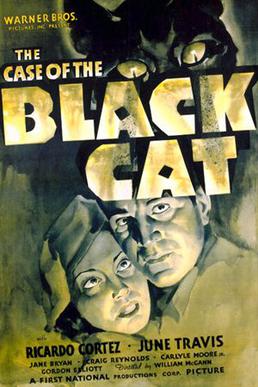
The Case of the Black Cat is a 1936 American mystery film directed by William C. McGann and an uncredited Alan Crosland, based on the 1935 Perry Mason novel The Case of the Caretaker's Cat by Erle Stanley Gardner. The film stars Ricardo Cortez as Perry Mason and co-stars June Travis and Jane Bryan in her film debut. The film is the fifth Perry Mason adaptation distributed by Warner Bros. Pictures in the 1930s and the first in the series not to feature Warren William as Mason.

Start Cheering is a 1938 American musical film directed by Albert S. Rogell and starring Jimmy Durante, Charles Starrett, Joan Perry, and Walter Connolly. It is best remembered today for guest appearances throughout the film by The Three Stooges, who were Columbia Pictures' short subject headliners at the time, as campus firemen. The film's choreography was by Danny Dare.

Blonde Ice is a 1948 American crime film noir starring Leslie Brooks, Robert Paige, and Michael Whalen. Based on the 1938 novel Once Too Often by Elwyn Whitman Chambers, the B picture was directed by Jack Bernhard, with music by Irving Gertz.

Scene of the Crime is a 1949 American police procedural directed by Roy Rowland, starring Van Johnson, and featuring Gloria DeHaven, Arlene Dahl, and Tom Drake. The film's screenplay, by Charles Schnee, is based on a non-fiction article by John Bartlow Martin, "Smashing the Bookie Gang Marauders". It was the only property sold by Martin to be made into a film. Scene of the Crime was producer Harry Rapf's last film of his thirty-plus year career; he died of a heart attack a week after principal photography for the film began.
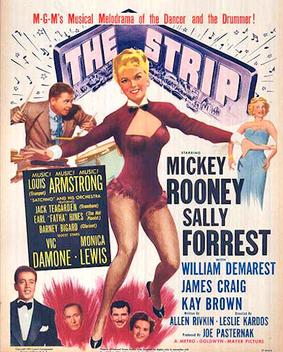
The Strip is a 1951 American crime film noir starring Mickey Rooney and Sally Forrest, with William Demarest, James Craig, and Kay Brown in support. Directed by László Kardos, the picture was shot largely on location in and around the Sunset Strip, including performances at the popular nightclubs Mocambo and Ciro's and scenes at the restaurants Little Hungary and Stripps.
No Questions Asked is a 1951 American crime film noir directed by Harold F. Kress and starring Barry Sullivan, Arlene Dahl, George Murphy and Jean Hagen.

The Doolins of Oklahoma is a 1949 American Western film directed by Gordon Douglas and starring Randolph Scott, George Macready and Louise Allbritton. It was distributed by Columbia Pictures.
